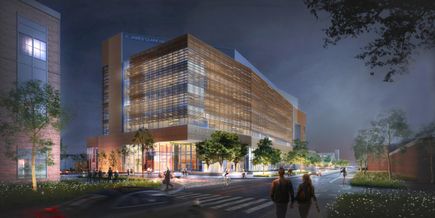Ballinger and TenBerke Design Generational Complex for Quantum at Yale University
Share

TenBerke, in collaboration with Ballinger, is designing the Upper Science Hill Development at Yale University. The 611,000 SF complex will be an intellectual hub and world-class environment for quantum science, engineering, and materials initiatives. Located in Yale’s Science Hill precinct, the project embraces the striking topography of its urban and landscape context and weaves the campus into its surrounding neighborhood.
To embrace the future of this constantly evolving, highly specialized research, the new project offers a flexible architectural and technical framework designed with thoughtful modularity and comprehensive durability. Senior Principal Craig S. Spangler, FAIA has found working with Yale to conceive this framework to be a very rewarding process. “We are especially excited about the integration of the lab and workplace environments to create a dynamic interdisciplinary setting grounded in exceptional environmental stewardship,” he said.
In scale and in its focus on quantum research, the endeavor is unprecedented in university science facilities in the United States, while ambitiously targeting outstanding energy performance and net zero operational carbon emissions. As one of Yale’s largest, most complex building projects ever undertaken, the design embodies the university’s commitment to the well-being of its scientific community, the expansion of scientific excellence, and the decarbonization of its scientific research infrastructure.
“Given the energy intensive nature of atomic and subatomic level research, Yale ambitiously challenged us to strive for a carbon net zero building with fossil fuel free utilities,” said Ballinger Senior Principal Jonathan Friedan, PE, LEED AP. “We are designing this home for ongoing scientific achievement and discovery to itself be a model of rigorous environmental stewardship, a pillar of sustainability, a shining example of the power of integrated design to reduce a building’s carbon footprint.”
The project will be completed in two phases, targeting construction completion in 2030.



